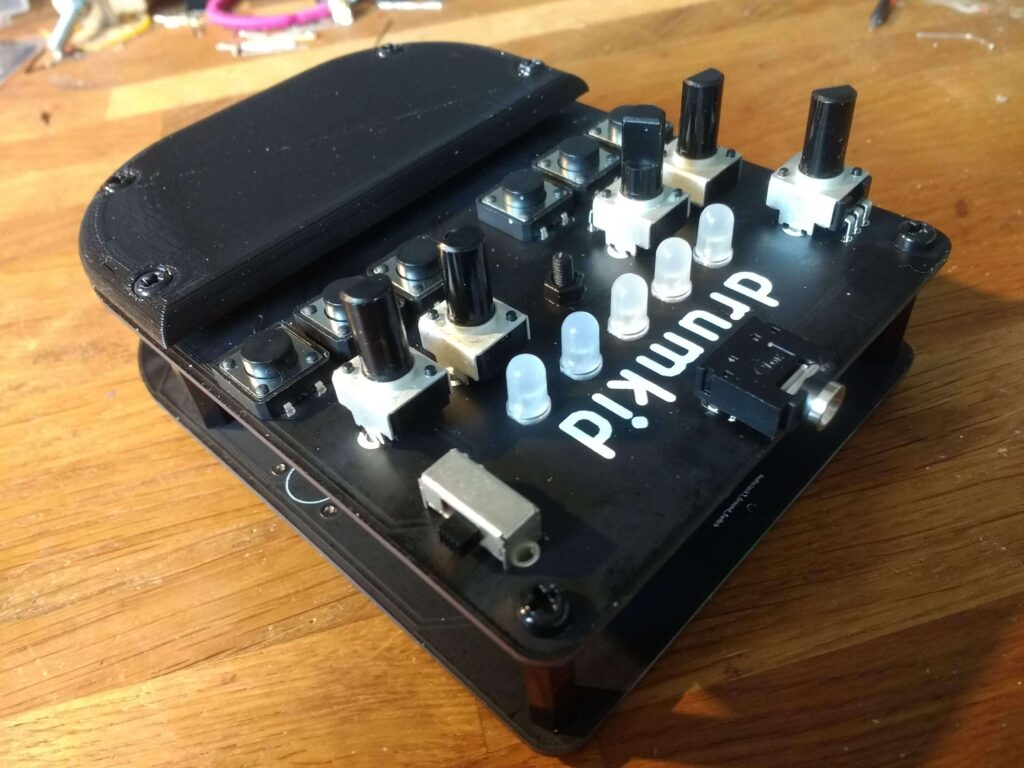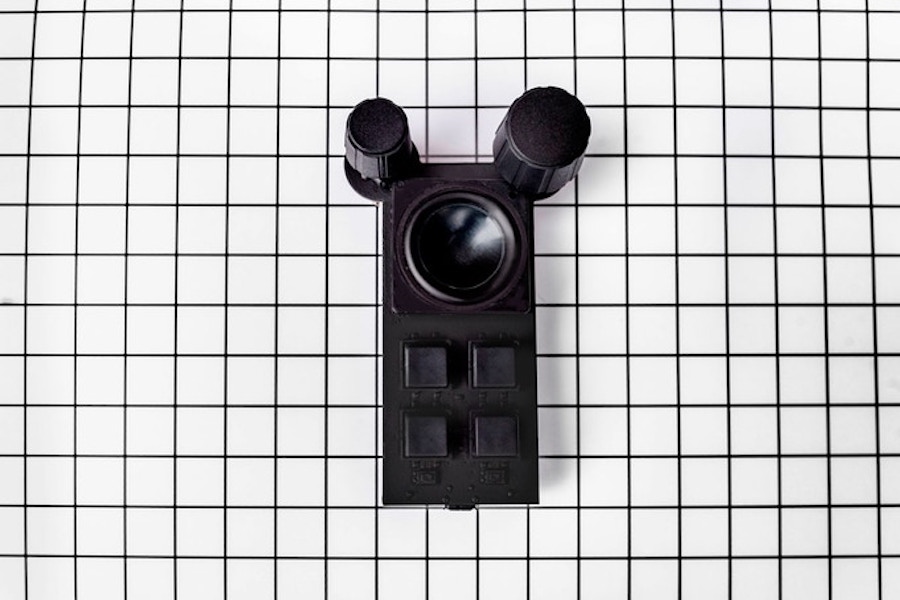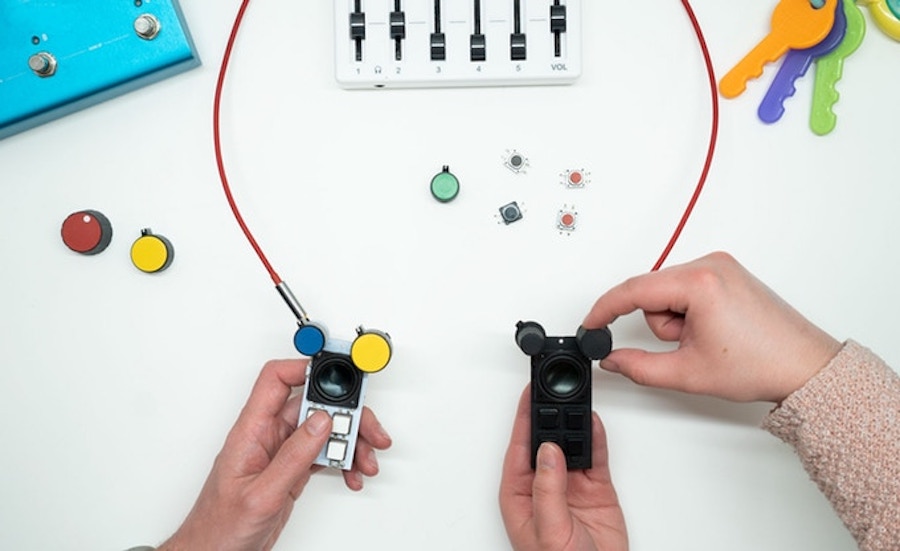DrumKid is a handheld aleatoric drum machine

Hearing live music is certainly enjoyable, but if the musician is using a drum machine, things can eventually get static. To add a bit more spontaneity into this class of robo-musician, Matt Bradshaw has created DrumKid — a handheld, battery-powered unit that uses random numbers to determine the rhythm and sound of a beat.

The device goes through a drum sequence, with a series of LEDs to indicate its progression, but also inserts randomly generated drum hits to the original beat. It features a variety of controllable parameters to alter how it sounds when played live via four knobs and six buttons.

The DrumKid was developed on an Arduino Uno and breadboard, then transferred to a PCB for the final version that will be for sale later this year. More info on the build is available in Bradshaw’s project write-up, while code and design files are on GitHub if you’d like to make your own!











